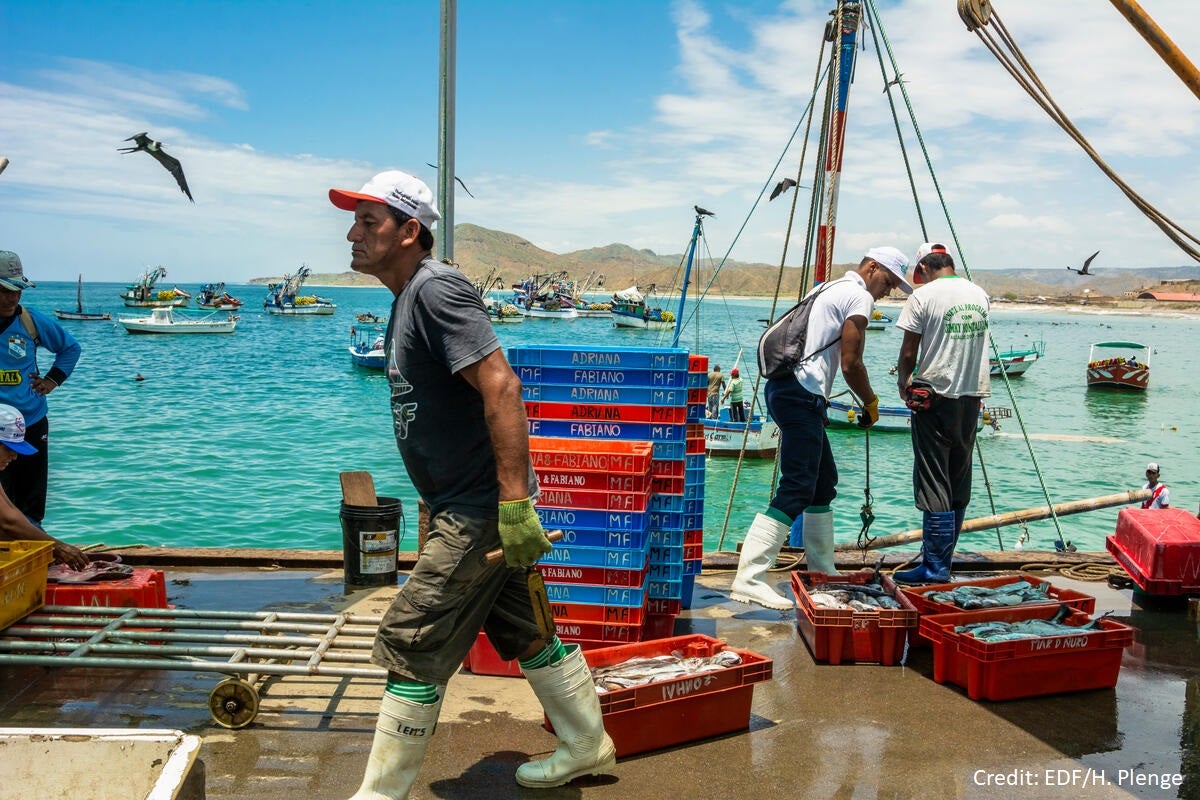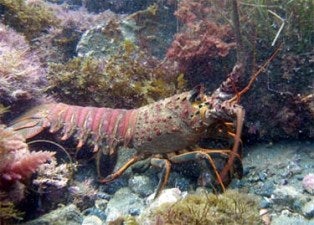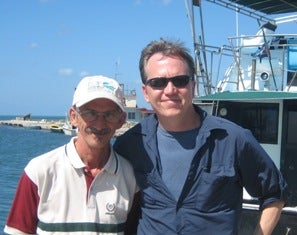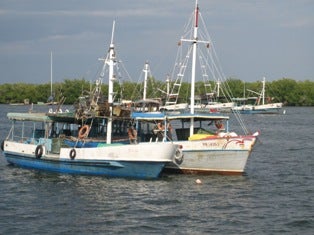Marine protected areas (MPA) are a conservation tool that sets aside part of the ocean to protect it for long-term conservation, similar to the way a state or national park functions on land. These MPAs are an effective way to preserve biodiversity by protecting ecosystems. But how are they utilized by people, and do they support human engagement? And, while conservation alone is important, will MPAs build climate resilience?
EDFish
Selected tag(s): Marine Protected Areas
Science to Action: a ten-year review of California’s MPA Network
Climate change is causing fishery problems, but we can solve them
By Eric Schwaab, Rod Fujita and Jacqui Vogel
Climate change is already transforming the distribution and abundance of fish stocks around the world. Warming temperatures, lower pH levels and many other factors are causing many fish species to shift to better habitats and others to shrink in abundance. This is problematic for the communities that rely on these stocks, especially when the shifts cross jurisdictional boundaries, such as those between fishery management zones or national exclusive economic zones, known as EEZs.
Climate-induced stock shifts are causing more overfishing, illegal, unregulated, and unreported fishing, discarding, higher fuel use, injustice and even armed conflict. Unless fishery management and fisheries become more adaptive and resilient to climate change, these problems will only worsen, but it’s not too late for solutions like flexible allocation systems, dynamic spatial management, ocean observing systems and international collaboration. Read More
IUCN WCC | Sustainable fisheries & biodiversity conservation — working together in the face of climate change
Over the past week, representatives from organizations and countries from around the world have come together for critical discussions about protecting and enhancing biodiversity in the face of climate change at the IUCN World Conservation Congress in Marseille, France. For the first time at the WCC, restoring ocean health was one of the central discussion themes, as a “marine journey.”
Protecting Cuba’s Abundant Coral Reefs
*Re-posted with permission from Sailors for the Sea
This month’s ocean watch essay comes to us from theEnvironmental Defense Fund(EDF), and was written by:Dan Whittle the senior attorney at Environmental Defense Fund and director of its Cuba Program. Doug Rader, PhD, EDF’s Chief Oceans Scientist, and Violet Dixon the Marketing Communications Associate for EDF’s Oceans program. All images by Noel Lopez Fernandez.
In the waters off the Southeast coast of Cuba there’s a near-pristine coral reef reserve called Jardines de la Reina, or the Gardens of the Queen. In this national park, groupers, snappers and many other reef fish flourish, along with several species of sharks. Although many of the world’s best-known reefs face destruction in the face of global warming and other threats, large portions of the Gardens of the Queen remain remarkably healthy. Relative isolation from human influence helps make Cuba’s coral reefs unique. Protecting these ecosystems — and species that rely on them — requires careful collaboration and cooperation among managers, scientists, fishermen and local fishing communities. Well-designed marine protected areas (MPAs), combined with innovative fisheries management, are the foundation for both sustainable commercial and recreational fisheries and a thriving eco-tourism sector..jpg)
Seeing under the sea
Healthy coral reefs, mangrove swamps and seagrass beds support thriving fish populations, which in turn support local fishing communities and attract ocean enthusiasts. Scuba divers come from around the world, for example, to witness the myriad of sea animals and breathtaking underwater ecosystems in the Gardens of the Queen.
On these dives, they encounter numerous species of shark including Caribbean reef sharks, silky sharks, nurse sharks and occasional lemon and blacktip sharks. Depending on the season and other factors, visitors also occasionally encounter whale sharks, the largest known fish species. Read More
‘Finding the Ways that Work’ in California Fisheries
By Guest Blogger, Huff McGonigal, fisheries consultant to EDF and the lead on our California fisheries projects with the spiny lobster fishery.
For the last 10 years, California has been working to create one of the most extensive networks of Marine Protected Areas (MPAs) in the world. When it’s complete later this year, this network will help protect California marine ecosystem for generations to come. But while MPAs will form a cornerstone for marine management in the state, simply closing these areas to fishing will not ensure sustainable fisheries off California. Healthy fisheries, and the communities and jobs that depend on them, require that focus now be shifted to effective management of the 84% of state waters that remain outside the MPA network.
The challenge in California, as in many states, is the persistent lack of agency resources available to move fisheries management forward in a meaningful way. This is exacerbated by a progressive law in California called the Marine Life Management Act that requires that fisheries be managed under Fishery Management Plans (FMPs). While the law’s concept of holistic management is a good one, the expense of creating these plans has largely kept them from being developed and management regimes have therefore remained stuck.
In 2008 EDF was approached by leaders of the spiny lobster fishery who were seeking to better control their fishing effort in order to maintain the fishery’s sustainability and economic viability. There was concern in the fishery that every year there was increasing pressure for fishermen to use more and more traps in order to compete for lobster and for fishing grounds. Further, as fishing grounds are lost to MPAs, fishing will be squeezed into an even smaller area, making these problems more acute. However, the requirement that change be carried out through a FMP presented a major obstacle. The state’s budget problems were worse than ever and the traditional approach, where the Department of Fish and Game (DFG) develops the FMP internally, was not possible. DFG and the fishery both agreed to try a new approach where DFG retained oversight of the process but where the majority of development would be carried out by contracted, outside expertise. EDF worked hand in hand with industry, DFG, and other partners to develop a budget and a broadly supported grant proposal to the Ocean Protection Council to secure the funding necessary to make this new model a reality.
After an extensive peer review, the Ocean Protection Council funded the full request amount of $990,000. In doing so it formally opened a new avenue for new fisheries management tools and approaches in California. Not only will this allow the lobster fishery to adjust to the new MPA network, but it represents a scalable model where national and international expertise can be directly engaged in FMP development and for a third of the cost of traditional FMPs.
There is now a pathway in California for coupling and integrating the MPA network with thoughtful, strategic management of fisheries – where closed areas are complemented by well managed open areas, and vice versa. To do this successfully will establish California as a true leader in ocean governance, and in the end, this is what it will take to ensure a healthy ecosystem, sustainable fisheries, and strong fishing communities.
Isle of Youth: Exploring Cuba’s Marine Sanctuaries
The remote and sparsely populated Isla de la Juventud (“Isle of Youth”) sits off the southwestern coast of Cuba, the largest island in the Canarreos Archipelago. Legend has it that pirates, including the infamous Sir Francis Drake and Henry Morgan, sought refuge in its hidden bays between exploits in the 16th and 17th centuries. Once known as Isla de Tesoros, it is said that the island inspired Robert Louis Stevenson to write his novel, Treasure Island.
Last month I joined a group of Cuban and American scientists on a three day trip to the Isle of Youth to examine a new effort to protect and expand Cuba’s extensive network of marine sanctuaries. On the southwestern part of the island—and not far from where the pirates hid – is Punta Frances, a national park and marine protected area that now provides refuge for endangered manatees, hawksbill sea turtles, and American crocodiles and many other forms of marine life. Siguanea Bay, where we stayed, and the broader Canarreos – enclosing the Gulf of Batabano – are ecologically rich, boasting some of the healthiest and most intact coral reefs in the region. The area is also economically important, home to highly productive lobster, shark and finfish fisheries.
The highlight of the trip was sighting four manatees in the mangrove-lined channels in the park. Scientists and fishermen in the area are now working together to track and protect these magnificent critters. Scientists worked with fishermen on the island to end the harvest of sea turtles in Cuban waters and are now developing a joint initiative to protect them.
These efforts are part of an impressive 5-year project launched by Cuban officials to protect and sustain marine and coastal ecosystems around the Isle of Youth and along most of Cuba’s southern coast. This initiative, funded in large part by the Global Environment Facility, is designed to end overfishing, protect marine life, and improve management of the extensive network of marine parks and sanctuaries.
Next month, colleagues and I will return to the Isle of Youth for a workshop that EDF is holding with partners from Cuba, Mexico and the United States. The workshop will bring together fishermen, scientists, resource managers, and conservationists to discuss innovative strategies to meet common goals of protected area management and fisheries management.
Stay tuned!













.jpg)


